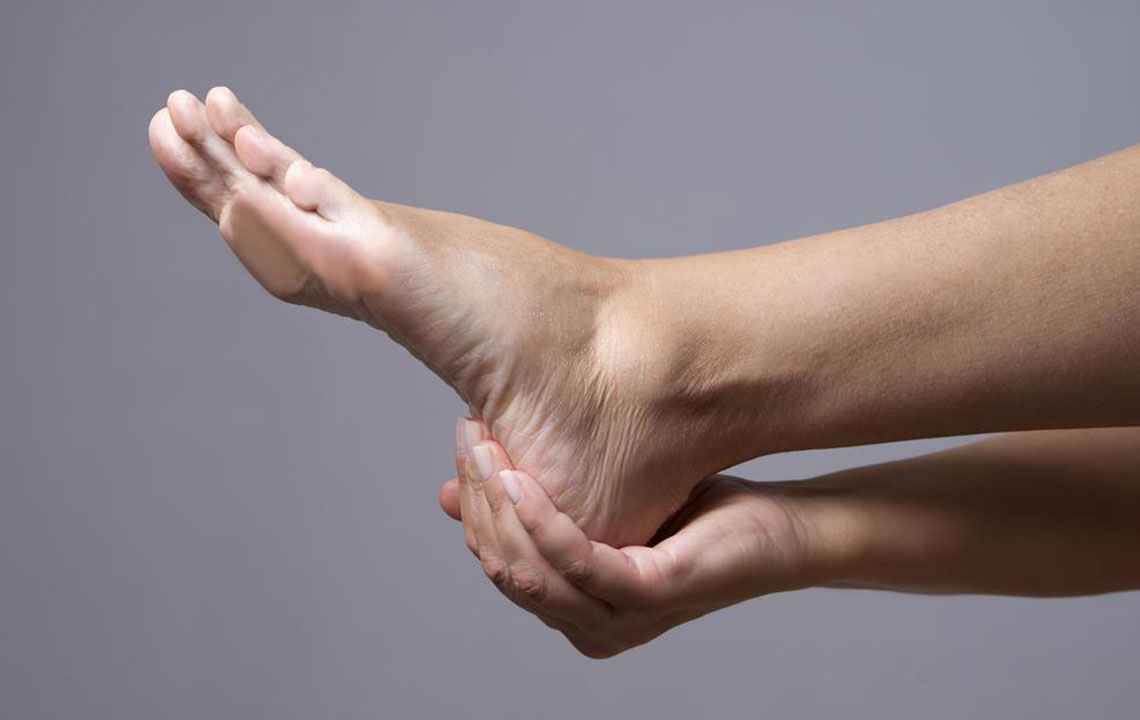Move Freely With These Diabetic Foot Pain Treatments

While blood sugar trouble is one aspect of diabetes, there are a number of other, smaller symptoms that can be just as difficult to live with. If you leave diabetes uncontrolled, it can eventually deteriorate multiple organs in your body including your eyes, gums, teeth, heart, kidneys, nerves, and even your gastrointestinal tract. One of the biggest symptoms of diabetes is diabetic neuropathy, also known as diabetic foot pain. It can be a struggle to deal with if you aren’t well-informed.
We’re going to take a look at a few of the options for diabetic foot pain treatments:
Transcutaneous Electrical Nerve Stimulation
Transcutaneous electrical nerve stimulation, or TENS, is a procedure that uses low voltage current to stimulate the nerves in your feet. TENS is commonly recommended by doctors as a non-invasive, non-medicinal option for diabetic foot pain treatment. The low voltage electrical waves help improve blood flow, which in turn relieves pain.
The procedure for TENS uses a small device, about the size of a smartphone. This device has cables with electric nodes that are placed on the patient’s skin. The therapist then sends low voltage bursts of electricity to the nodes on the patient’s skin. This stimulates the nerves in the area by activating them. The nerves being stimulated then block pain signals being sent to the brain. TENS also helps your brain produce endorphins to alleviate the pain that you feel.
Anti-seizure Drugs As Diabetic Foot Pain Treatments
Drugs commonly used for treating seizures can be used to relieve pain in extreme cases of diabetic neuropathy. This kind of drug usually includes chemicals that help regulate blood flow and includes drugs that prescribed for epileptic seizures.
Anti-seizure medicines like most heavy duty medication pose a high risk for addiction. You can only purchase anti-seizure drugs with a doctor’s prescription. Never go beyond the prescribed dosage, and consult the physician at regular intervals to ensure the drugs are working towards your diabetic foot pain treatment.
Antidepressants As Diabetic Foot Pain Treatment
Antidepressants aren’t limited to just being used to treat depression. In the right dose, they can be very useful to treat other ailments. They’ve been proven to help a range of other ailments, but only in the right dose. These drugs help the body combat diabetic foot pain by sending pain signals to the brain. The brain receives signals that the body is under stress and it releases endorphins that block, and alleviate the pain. This can offer immense relief from the pain and can be taken on a doctor’s prescription. Just ensure you inform your doctor about any other medication you’re on because antidepressants can interact with other drugs in potentially dangerous ways.
Opioids As Diabetic Foot Pain Treatment
Opioid pain medication is extremely powerful and potent. Drugs like oxycodone and tramadol are used to treat extreme pain. Pain medication as potent as this is kept under strict observation even in ERs. Opioids are a last resort and must be used only if all other pain management options have failed and the pain is unbearable.
Steroid patches and anesthetic patches are also alternatives to conventional opioids. They can be placed on the skin, and they slowly dispense a steady amount of the drug, over time, through the skin. Opioids have an extremely high potential for addiction and must be taken with extreme care and only under a doctor’s prescription. This is usually a last resort option for diabetic foot pain treatment.
Alternative Medicine As Diabetic Foot Pain Treatment
Conventional medicine isn’t the only form of treatment for diabetic neuropathy. Nations like India and China provide alternative treatments using eastern medicine. Studies have shown that alternative medicine is a growing industry around the world.
Ayurveda is used by millions of people in India to help manage or cure a range of illnesses and ailments. It attempts the use of naturopathy to fight different ailments. Acupuncture and traditional Chinese medicine play a similar role in chinese society.
The success or failure of eastern or alternative medicine as a form of diabetic foot pain treatment varies from case to case and has no concrete evidence backing it. Extreme care is recommended when attempting this type of treatment. Consult physicians in that field of medicine on a regular basis, ensure you do the required tests with a qualified healthcare professional and keep a track of changes in your body during treatment. Be thorough with your research before you opt for alternative medicine. Consult a physician before mixing conventional medicines and medication with alternative medicine. Some conventional medication may react badly if mixed with alternative medicine.


